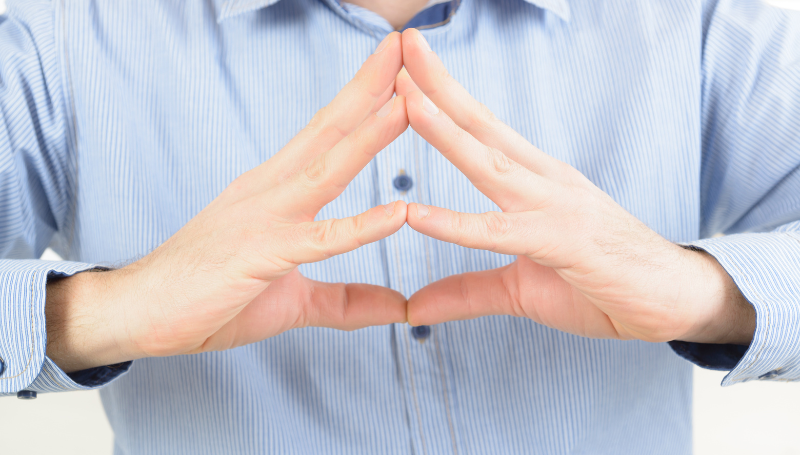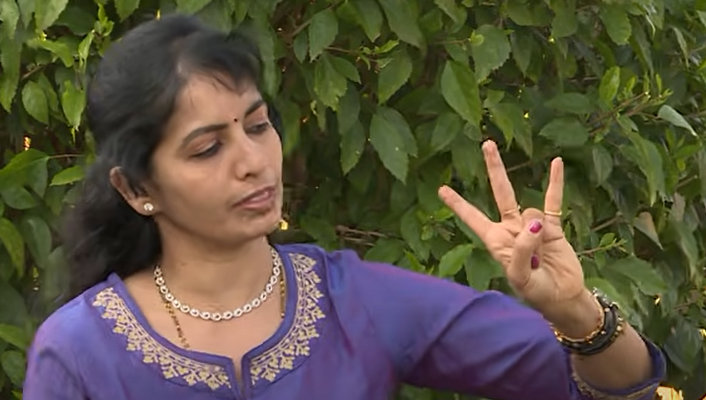Mudras for harmonious living
(Awaken | Sarah Finger) Although the origins of mudras are not known, they have been around for thousands of years and have appeared in many different religious and spiritual traditions…
Mudras for optimal and harmonious living
The word mudra comes from the Sanskrit word: mud, which means bliss, and dra, which means dissolving. So, the word mudra literally means dissolving into bliss. It is also translated as a gesture, or an attitude used to create a circuit of energy in the body. Mudras can be performed with the hands, the head, the perineum, and even through specific shapes created with our entire body. In modern day yoga and meditation, we are most familiar with hand mudras.
The hands occupy about 30% of the motor and sensory cortex of the brain, which means that what we do with our hands affects the way that we feel. We also have an enormous number of sensory receptors in our fingertips, more so than any other part of the body. Therefore, the way that we position our fingers impacts which mode of awareness that arises within us. Each hand position lights up a certain part of our brain which impacts our mood, our energy, and the way we perceive the world around us.
According to the traditions of yoga and Ayurveda, each finger represents a different element. The thumb is fire, the index finger is air, the middle finger is space, the ring finger is earth, and the pinky finger is water. From a subtle energetic perspective, the positioning of the fingers in relationship to each other can either enhance or diminish the qualities of those elements within us.
In this article, we will explore several different hand mudras to elicit a desired response for optimal and harmonious living.
Anjali mudra for union
You may be familiar with this mudra if you have ever traveled to India or other parts of Asia. If you frequently attend yoga or meditation classes, you have likely shared it with your community there. It is called anjali mudra, which means “offering,” and it is a symbol of bringing together the opposites and expressing union, or oneness.
Anjali mudra is a powerful way to balance the right and left hemispheres of the brain, as well as the solar and lunar energies in our body. When we balance these dualities, we move into a state in yoga known as pratyahara, or sense withdrawal, where the mind becomes steady, our senses draw inward, and we can rest in peaceful awareness. In this state, we can bear witness to our sensations, images, feelings, and thoughts rather than impulsively react to them.
Practicing the mudra
To perform this mudra, sit comfortably, either in your chair or on a cushion, allowing the spine to lengthen up and the shoulders to soften down the back.
Take a smooth breath in and a long breath out.
Slowly begin to guide your palms in to touch one another at the center of your chest. Allow a small space to exist between the palms of the hands. This is a symbol of allowing the space for the teachings to reveal themselves to you.
Close your eyes and stay here for about a minute, noticing the sensations of the breath as it lifts and lowers in your ribcage area. Let your mind rest in this space of quiet and reflection.
When you are ready to, bow your head down towards your heart, a symbol of surrendering the intellect of your mind to the wisdom of your heart.
Allow the hands to float down and gently blink the eyes open.
Use this gesture anytime you feel scattered, uncentered, or distracted by circumstances around you, so that you remember that quiet space of stillness that is always within you.
Hakini mudra for focus and concentration
If you have a tough time focusing your attention on one thing at one time, you might have excess Vata, which is the mind body type that relates to air and space. When our Vata gets too high, we struggle with sitting still, completing tasks, and resting our attention on one thing at a time.
Hakini mudra is an excellent hand gesture to cultivate the qualities of focus and concentration. Hakini is a Hindu deity that is meant to have enormous power. Hakini mudra is often referred to as “brain power mudra” because it boosts our memory and replenishes our brain from mental fatigue. It also guides our awareness to the third eye point, which is the energetic point of insight and intuition. This point relates to the pituitary gland in the brain, and it helps us to take conscious control of our choices and actions in our life.
Practicing the mudra
To perform this mudra, come to sit comfortably, either on a chair or on a cushion. Allow your spine to lengthen up tall and relax the shoulders. Gently join your fingertips to touch at the center of your chest. Keep space between the palms of your hands, as if you had a ball there, and join only the fingertips to touch.
Stay here for about a minute and if it is comfortable for you, close your eyes, allowing your breath to become steady and even. Let your eyes rest into the space between the eyebrows and slightly above and absorb your awareness into this space. When you are ready to, release your hands back down and notice any shifts you feel from this simple hand gesture. You can practice this at any time throughout your day to help revitalize and focus your mind.
Lotus mudra for compassion
If you spend a lot of your day over-analyzing, calculating, and rationalizing, you may have excess Pitta, which is the mind body type that relates to fire and water. When we have too much fire in our constitution, we overexert ourselves, judge others, and we become attached to the results. This can lead to a feeling of disconnection from ourselves and from others.
Padma mudra is a mudra that helps to anchor our awareness back to our heart. It enhances the virtues of the heart, which are compassion, kindness, generosity, and connection. When we practice padma mudra, we give ourselves the gift of loving kindness.
Practicing the mudra
To practice this mudra, come into a comfortable, steady seat either on a chair or on a cushion. Take a steady breath in and a steady breath out. Bring your palms to touch at the center of your chest in Anjali mudra. Keep your thumb and pinky fingers touching and slowly begin to open the middle three fingers, as if your fingers were the petals of a lotus flower blossoming.
Stay here for about a minute and if it is comfortable for you, close your eyes, noticing where you feel expansiveness in your body. Allow your awareness to rest in the space at the center of the chest, feeling a sense of luminosity there. Stay for as long as you like, bathing in your own radiance.
When you are ready to, slowly float the hands down with the palms facing up so that the backs of your hands rest onto your thighs. Gently float your eyes open and notice any shifts you feel here.
Keep this sense of softness with you as you move throughout your day, remembering that, just like the lotus flower, you too can experience growth in the muddy waters. You always have the potential to move towards the light and realize your fullest potential.
Surya mudra for motivation
Fire, or agni in Sanskrit, is responsible for the digestion of our food, our thoughts, and our feelings. We need fire to motivate and awaken us. When we are lacking in fire, we feel unmotivated, depressed, lethargic, and uninspired. This is often what happens when we have excess Kapha, which is the mind body type that relates to earth and water.
Fire ignites our actions, our passion, and our purpose. Surya mudra is a powerful mudra to help awaken us to these latent seeds within us. The word surya means sun in Sanskrit, and when we perform this gesture, we embody the energy of the sun. It helps us to burn through stagnation and spark the fire of transformation within us.
Practicing the mudra
To practice Surya mudra, rest the backs of your hands onto your knees and allow your breath to become steady. Fold the ring finger of both hands down and clasp it with the thumb. This might feel a little uncomfortable at first so do not strain yourself. Over time, you will build a little more flexibility in the ring finger to easily fold it down. The more pressure you exert on the ring finger, the more amplified the solar energy will become.
Stay here, and if it is comfortable for you, close your eyes. Start to focus your awareness on your breath and allow the breath to flow in and out through the nostrils. Remain here for about a minute, noticing any shifts your start to feel in your mind and your energy field because of this gesture.
To let go of the mudra, allow the fingers to extend out with the palms facing up. You might physically feel warmer, or your heart might beat more strongly. Notice these subtle changes, and then come back to your breath, taking a regular breath in through the nostrils and then exhale out through the mouth.
Allow the heat, energy, and radiance that you created to inspire you throughout your day, giving you the courage and motivation you need to take action in your life. Know that you always have the power to shift the way you feel and to ignite the spark of deep transformation within you.
Peace, balance and harmony for daily life
I hope these simple and profound tools were able to bring more peace, balance, and harmony into your state of being. It’s liberating to know that we do not have be in a yoga or meditation session to experience the power of these mudras; they are available to us at any given time.
Yoga reminds us that the physical body is its own technology that can open us up to unlimited modes of awareness. And lucky for us, our body is with us wherever we go. Allow these mudras to bring you back to the home of your body, which is the gateway to infinite potential. Namaste!
Source: Awaken
You may also like:








